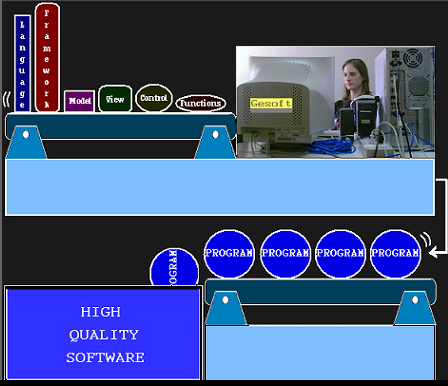Creating sites with responsive web design

Web Design, or site development, responsive or not, refers to a process of building and testing software, specific to the web (i.e. web browsers), in order to obtain a set of pages, and features that satisfy the predefined objective, either in terms of usability, as also by compatibility with existing systems.
Currently, a major concern to take into account is the need for sites to be responsive (Responsive Web Design), or are constructed in such a way that it can run on any platform where you can access the Internet, such as desktop computer, notebook, netbook, mobile (tablet, smartphone, cell phone, etc.), Digital television (DTV), High-definition television (HDTV), and other devices or digital media.
The web development can range from simple static pages to rich, dynamic applications, such as e-commerce, news portals, social networks, among many others.
A very important aspect to consider is that you can use the same technology for web site development to build systems to run on Intranet, that is, we can build internal system of one company, with the same quality and richness of a web site resources, to run exclusively by the users of this company, via intranet and/or internet.
To make a site accessible on the Internet, we usually need to hire a hosting company (shared server, dedicated server or cloud), for which you pay a monthly rent, referring to the contracted resources, like disk consumption, quantity of accesses, among others.
To make a site to be accessed on the Intranet, we usually install it on an internal server (or servers) of the company, but you can also hire a web hosting company, usually renting a dedicated server or cloud service.
A website is usually composed of two major layers:
1) The site itself, ie, accessible to the client portion, to the internet users, where the content can be seen by free access or protected by login (password).
2) The back-end system, which is always protected by login (password), it usually can only be accessed by authorized personnel by the company, such as employees, contractors, and others.
On a site with dynamic content, it is updated from the back-end system, whether through human interaction, either via automatic processes.
A website with static content hardly receives updates, and, when necessary, by default, the site owner hires a developer and / or a web designer for this activity.
Note:
Often the back-end system is much more complex than the site itself, usually raising the cost and development time of the entire solution (site more back-end system). This depends a lot on each project, because each case is different, and there is no single recipe, ie, for each scope its own solution, its own cost of survey, analysis, design, development, testing, installation (deploy), maintenance and project management.
Date of this text: 01.22.2015.
 Accessibility: jump to the main content
Accessibility: jump to the main content




